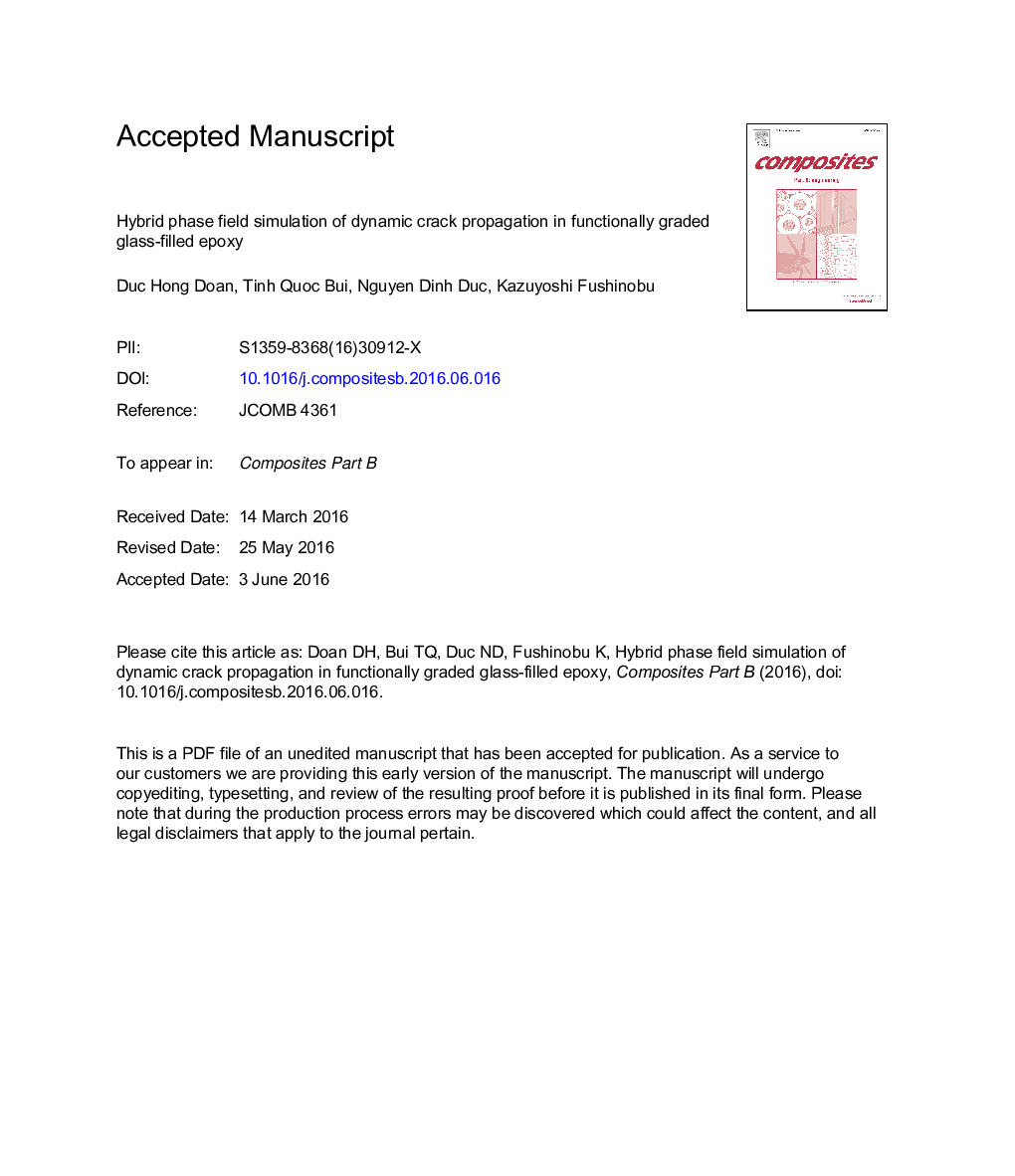| Article ID | Journal | Published Year | Pages | File Type |
|---|---|---|---|---|
| 7212476 | Composites Part B: Engineering | 2016 | 33 Pages |
Abstract
Numerical simulation of dynamic crack propagation in functionally graded glass-filled epoxy (FG) beams using a regularized variational formulation is presented. The Griffith's theory based hybrid phase field approach for diffusive fracture is taken, which is able to accurately simulate complex behaviors of dynamic crack growth in FGMs. The FG beams under impact loads experimented by Kirugulige and Tippur (Exper. Mech. 2006; 46:269-281) are considered, taking the same configurations, material property, crack location, and other relevant assumptions. The crack paths, crack length, crack velocity, energies, etc., computed through the hybrid phase field model are numerically analyzed, and some of those results are directly compared with the experimental data. Due to lack of necessary information regarding impact loading profiles and boundary conditions in setting the tests, the simulations become difficult as an inappropriate definition of loading and boundary conditions can significantly alter the outputs of numerical solutions. This issue is important and thus is discussed. Two specific loading profiles, the constant and the linear displacement velocities, are taken into account, while free-free FG beams are considered. We show that good agreements of crack paths between the experiment and phase field approaches can be obtained. Numerical results also confirm a significant effect of elastic gradients on final crack paths. Similar to the experimental results, we also found that the crack path kinks significantly when situated on the stiffer side compared to the compliant side of the FG specimen.
Keywords
Related Topics
Physical Sciences and Engineering
Engineering
Engineering (General)
Authors
Duc Hong Doan, Tinh Quoc Bui, Nguyen Dinh Duc, Kazuyoshi Fushinobu,
